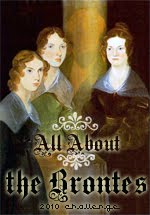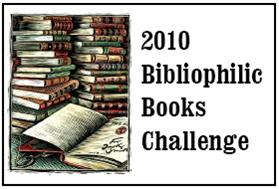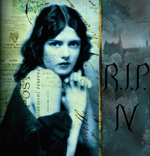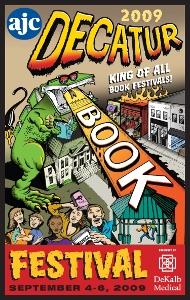I finally had an opportunity to peek at my feed reader and discovered two interesting book challenges for 2010. I plan to participate in both challenges, given I have the time. I have just discovered I will be teaching a fifth class (and yes, five different preps) next semester, and I will be taking a difficult grad school course. I must find time to read, however, even if it’s just listening to audiobooks in the car because I need it to feed my soul.
The first book challenge I’ll be participating in is the 2010 Bibliophilic Book Challenge. This challenge involves reading books about reading, and from what I gather, what I call “derivative fiction,” such as Jasper Fforde’s Thursday Next series, can count. I have not decided with certainty what I will read, but I know one book will be Thomas C. Foster’s How to Read Novels Like a Professor. I thoroughly enjoyed his other book, How to Read Literature Like a Professor. I can’t stop recommending it to folks. The challenge consists of three levels:
- Bookworm: Read three books
- Litlover: Read six books
- Bibliomaniac: Read twelve books
I know I can’t complete the Bibliomaniac level, and Litlover is possible, but unlikely, so I will only commit to Bookworm at this point. I just need to choose two more books. I will update once I have figured out what I’ll read.
 The other challenge is the All About the Brontës challenge. In order to complete this challenge, I need to read or watch three to six Brontë-related books or films by the June 30 deadline. The flexibility of the challenge means that I will probably complete it, but aside from reading Syrie James’s The Secret Diaries of Charlotte Brontë, I’m not sure what I will do. I am thinking at least one audiobook, probably Wuthering Heights, which I’ve already read, but which I will be teaching this year, so it would be worth it to revisit. Again, once I figure out exactly what I plan to do for the challenge, I’ll update, but I will commit to three items at this point.
The other challenge is the All About the Brontës challenge. In order to complete this challenge, I need to read or watch three to six Brontë-related books or films by the June 30 deadline. The flexibility of the challenge means that I will probably complete it, but aside from reading Syrie James’s The Secret Diaries of Charlotte Brontë, I’m not sure what I will do. I am thinking at least one audiobook, probably Wuthering Heights, which I’ve already read, but which I will be teaching this year, so it would be worth it to revisit. Again, once I figure out exactly what I plan to do for the challenge, I’ll update, but I will commit to three items at this point.
If you have a reading suggestion that would be appropriate for either challenge, I would surely appreciate it. Just leave a comment.




